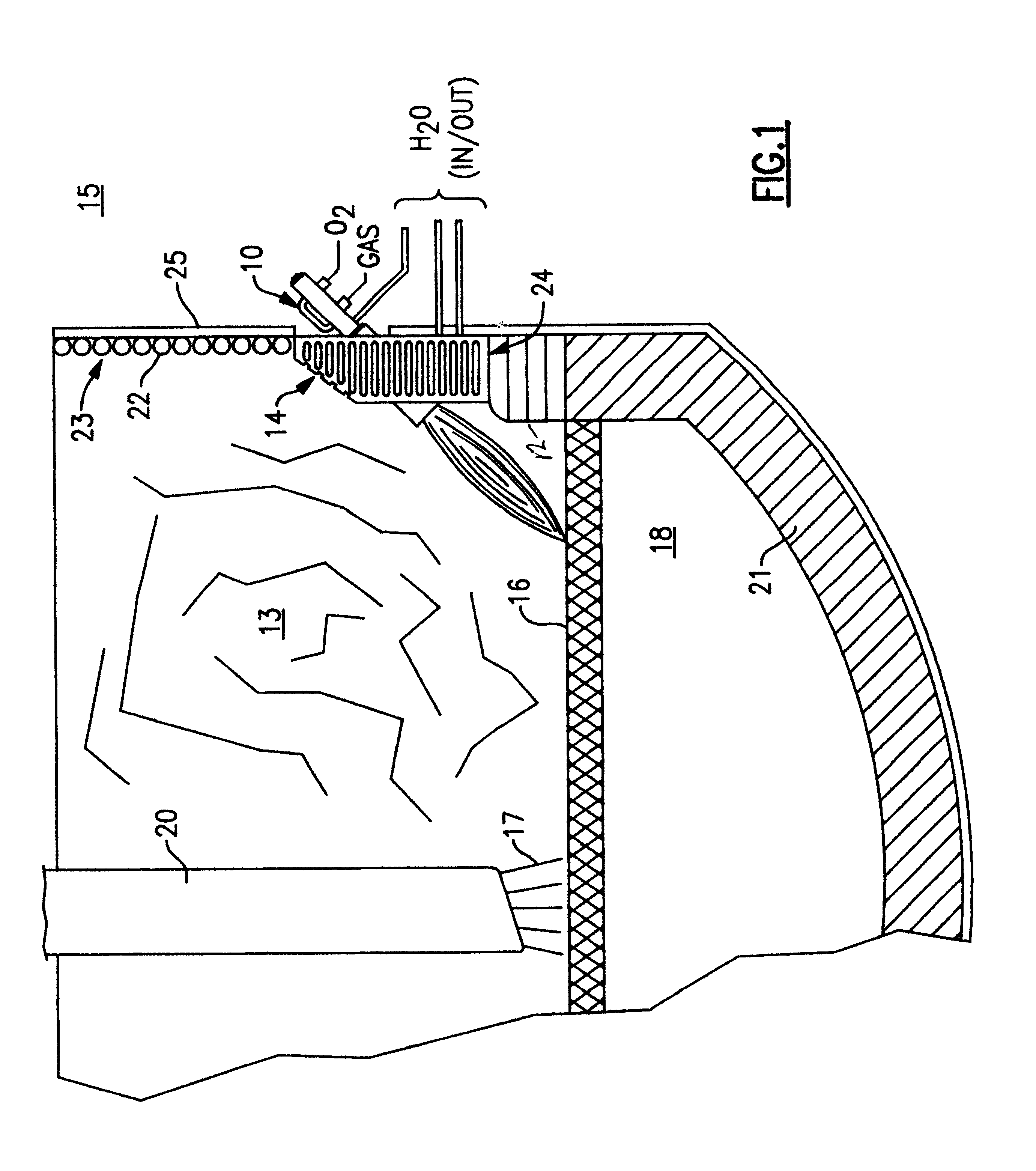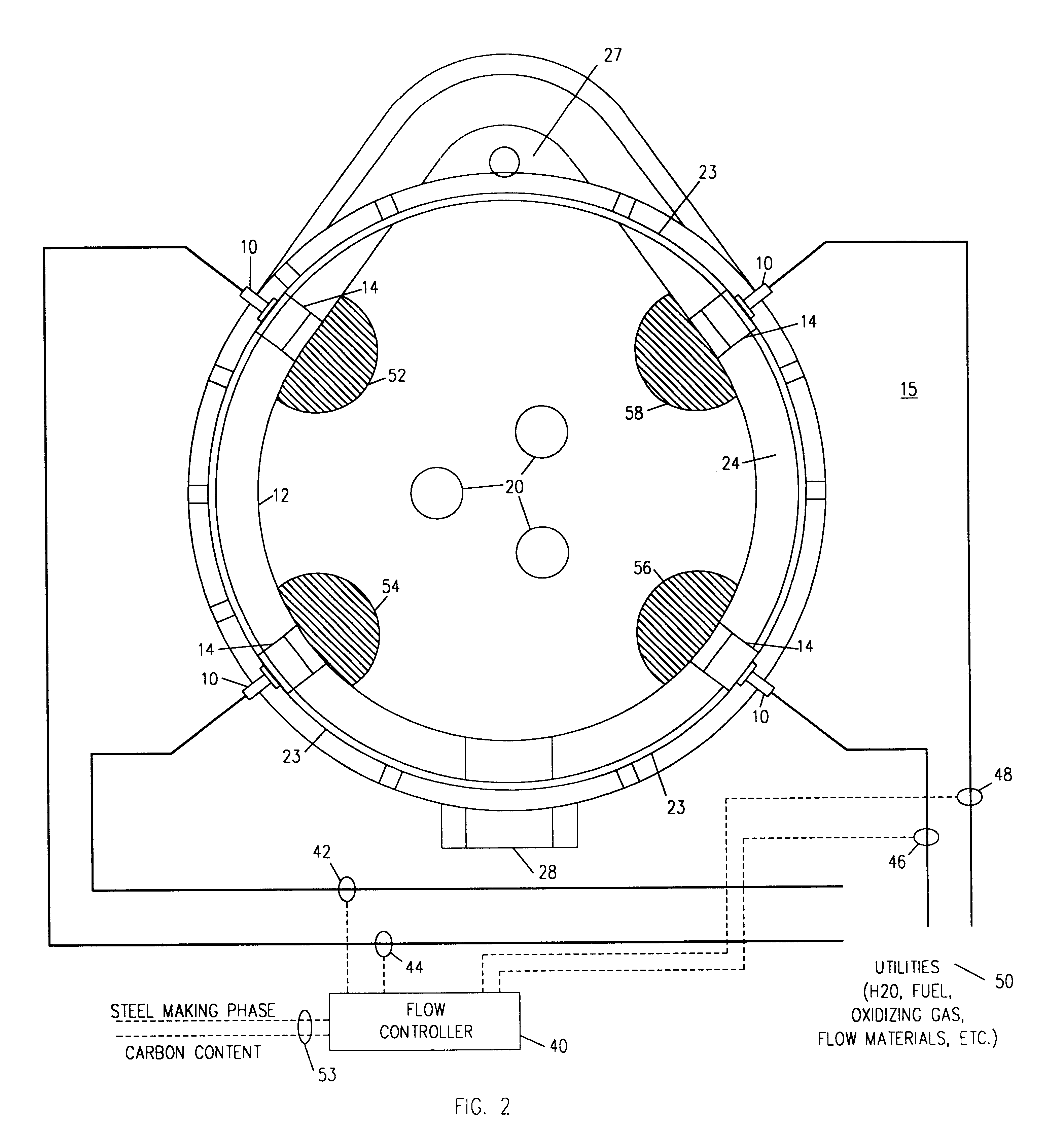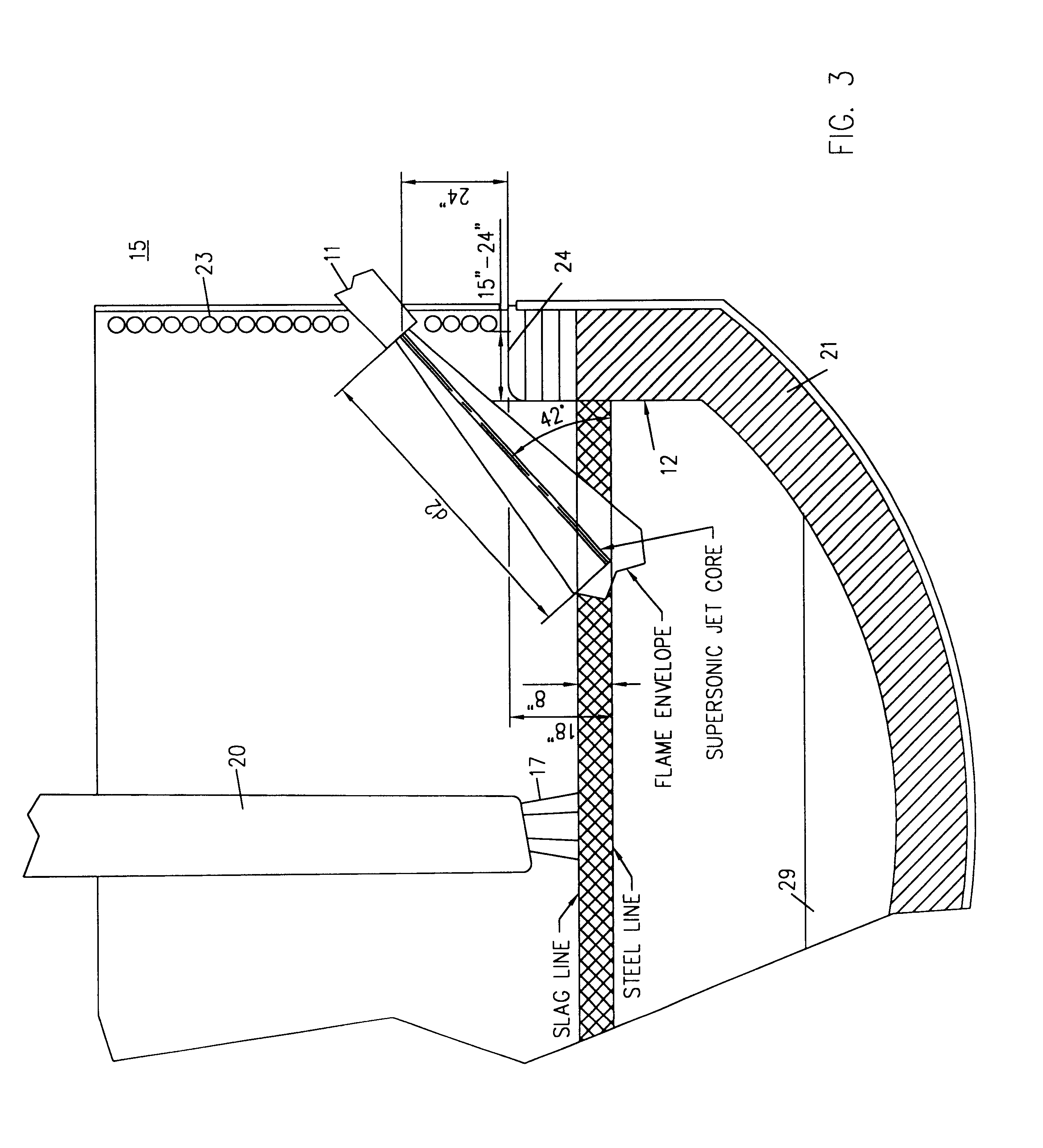Method for melting and decarburization of iron carbon melts
a technology of iron carbon melt and decarburization method, which is applied in the direction of lighting and heating apparatus, manufacturing converters, furnaces, etc., can solve the problems of limiting the amount of energy which can be introduced into the furnace and the rate at which it can be used efficiently, and the inability of the burner to deliver effective high-speed oxygen befor
- Summary
- Abstract
- Description
- Claims
- Application Information
AI Technical Summary
Benefits of technology
Problems solved by technology
Method used
Image
Examples
first embodiment
A first embodiment includes the controller 40 having a program which reduces the total oxygen supplied to the multiple reaction zones after the critical carbon content is reached by turning off one or more of the burner / lances 10 supplying oxygen to the individual reaction zones 52, 54, 56 and 58.
second embodiment
A second embodiment includes the controller 40 having a program which reduces the total amount of oxygen supplied to the multiple reaction zones after the critical carbon content is reached by varying the duty cycle of one or more of the burner / lances 10 supplying oxygen to the individual reaction zones 52, 54, 56 and 58. These control schemes advantageously allow the supply of oxygen to more closely follow the oxygen demand of the reaction after the critical content is reached. Moreover, they are particularly advantageous for oxidizing gas injection equipment where it is either inefficient or incapable to vary the flow rate.
A third preferred embodiment includes the controller 40 having a program which reduces the total amount of oxygen supplied to the multiple reaction zones after the critical carbon content is reached by combination of turning off or varying the duty cycle of one or more of the burner / lances 10 supplying oxygen to the individual reaction zones 52, 54, 56 and 58.
fourth embodiment
A fourth embodiment includes the controller 40 having a program which reduces the total amount of oxygen supplied to the multiple reaction zones after the critical carbon content is reached by varying the flow rate of one or more of the burner / lances 10 supplying oxygen to the individual reaction zones 52, 54, 56 and 58. This control scheme is most advantageously used with oxygen injection equipment with the capability of efficiently adjusting the high velocity oxidizing gas injection flow rates.
PUM
| Property | Measurement | Unit |
|---|---|---|
| injection angle | aaaaa | aaaaa |
| angle | aaaaa | aaaaa |
| angle | aaaaa | aaaaa |
Abstract
Description
Claims
Application Information
 Login to View More
Login to View More - R&D
- Intellectual Property
- Life Sciences
- Materials
- Tech Scout
- Unparalleled Data Quality
- Higher Quality Content
- 60% Fewer Hallucinations
Browse by: Latest US Patents, China's latest patents, Technical Efficacy Thesaurus, Application Domain, Technology Topic, Popular Technical Reports.
© 2025 PatSnap. All rights reserved.Legal|Privacy policy|Modern Slavery Act Transparency Statement|Sitemap|About US| Contact US: help@patsnap.com



